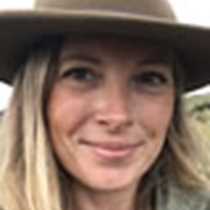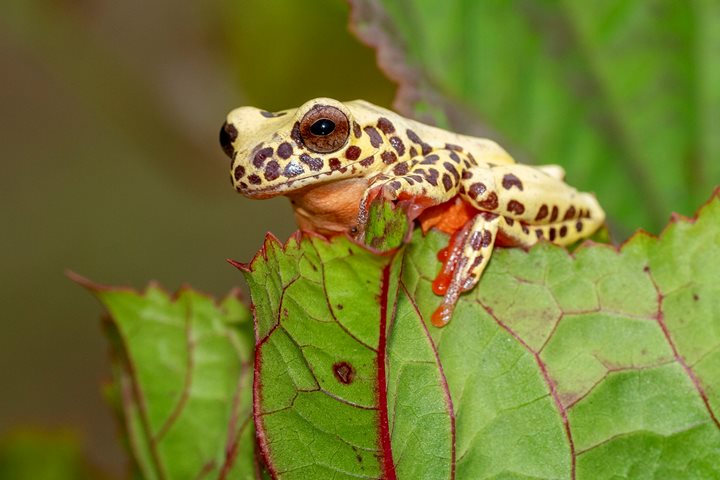We were up and out bright and early this morning as we took the
skiffs to explore Flor de Costaña. We could tell it was going to be a beautiful
day, as warm pink skies began to give way to a clear-skied morning. Almost
before we had time to sit down in the skiffs, we spotted Amazon pink dolphins
up ahead. As we watched them, several gray dolphins surfaced in the same spot.
Dolphins are attracted to the mouth of the Flor de Costaña tributary because as
it enters the Ucayali River, it becomes a concentration point for fish. The
dolphins porpoised and swam about in all directions chasing after their
breakfast.
We hadn’t spent long in the Flor de Costaña when a fisherman
approached us in his canoe with his catch. Denis told us about the fish and
then demonstrated the spearfishing technique by aiming and throwing the spear
with a quick and mighty throw. A beautiful great snowy egret stood in the
grasses watching all this go down, until it decided to start eyeing some
spearfishing of its own. It had tilted its head to the side to start sizing up
some prey as a pair of short-tailed parakeets caught our attention.
Our morning continued with sightings of all sorts of birds,
including neotropical cormorants, black-collared hawks, tropical kingbirds and
even a wattled jacana guarding her eggs atop a floating nest. They were just a
smattering of the 20 or so bird species we saw that morning. The highlight of
the morning, though, was a truly rare sight.
After breakfast, we took to the skiffs again in search of the
world’s smallest monkey, a fist-sized creature called the pygmy marmoset. There
are only a few places in the world where this monkey can be found, and as
always with wildlife, there was no guarantee that we would find one. But, our
guides knew of a spot where they’d been seen in the past. We motored up to a
dense cluster of trees. Tangles of vegetation blocked our view everywhere and
created a confusion of light, but before we knew it, the eagle eyes of our
guides spotted a tiny form moving deep within the tree trunks — a pygmy
marmoset! We spent a good deal of time maneuvering our boats into position to
get catch a glimpse and maybe a photo or two. What a lucky experience to spot
this tiny and rare primate.
This was just the first half of our first day!
Our afternoon was full of beautiful light and abundant wildlife
as we explored Supay Creek. We watched a bunch of yellow-rumped caciques call
and shake their tail feathers amongst the hanging nests of their colony. They
have an amazing repertoire of calls and are capable of imitating all sorts of
other creatures and sounds. A beautiful great black hawk caught our attention,
having itself caught something from within the forest. It struggled to fly off
with its prey and instead emerged from the trees to perch on a liana (what we
often mistakenly think is called a vine). The light was super dramatic, and the
hawk posed as a striking figure.
The end of our trip saw us passing through a very narrow part of
the creek where we encountered a very confident white-eared jacamar. It perched
on a liana even as our boats passed directly beneath it, almost within touching
distance. The jacamar suddenly flew and caught an insect straight out of mid-air
before landing back on a nearby liana. A cluster of parakeets watched from the
other side of us. Not a bad start to our Amazon adventure.







